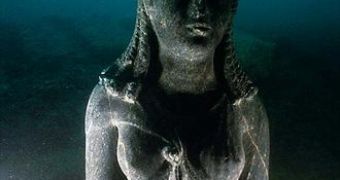The Egyptian city of Heracleion fell off the map some 1,200 years ago. Archaeologists suspect that it ended up at the bottom of the Mediterranean Sea after an earthquake had struck Aboukir Bay, near Alexandria.
However, bulletproof evidence in support of this theory is still lacking.
Its remains were discovered by underwater archaeologists in 2000. The people who found the city more than a decade ago were Dr. Franck Goddio and a team of scientists working with the European Institute for Underwater Archeology.
The city's remains were resting just 30 feet (9.14 meters) below the water's surface.
Since then, researchers have been trying to make head and tail of whatever artifacts they found buried in the sand in said part of the Mediterranean.
A new documentary film, i.e. “Egypt’s Sunken City: A Legend Is Revealed,” details the progress made by archaeologists thus far, and sheds new light on Heracleion's mysteries.
Sources say that, as far as archaeologists can tell, this city used to be a very important international trade hub.
Thus, researchers maintain that the city most likely served as a port, it purpose being that of facilitating trading activities between the Mediterranean and the Nile.
This idea is backed up by the discovery of 64 ancient shipwrecks and over 700 anchors. Numerous gold coins and tablets inscribed in Greek and Egyptian were also found buried in the sand.
What's more, it appears that people living in those days regarded the city of Heracleion as a very important religious center. Hence the unearthing of stone sculptures measuring up to 16 feet (4.87 meters) in height.
Specialists suspect that these sculptures used to be on display at the city's central temple.
Check out the videos below to learn more about this city and see footage of some of the artifacts uncovered by underwater archaeologists during the past 13 years.

 14 DAY TRIAL //
14 DAY TRIAL // 

